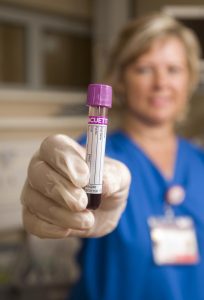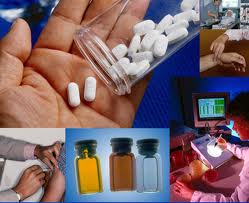
By Christine Kukka
One of the bravest things people living with hepatitis B can do is participate in a clinical trial to help find the drug that will one day eradicate the virus that infects more than 240 million worldwide.
There are medical and financial advantages to participating in a trial. We may gain access to a drug that is more effective than what is currently available. We may get free lab tests and medications, and we know we have helped millions of others in the pursuit of a cure.
For example, if you participate in the Hepatitis B Research Network Adult Cohort Study, which is currently collecting data on how hepatitis B affects in 2,500 people in the U.S. and Canada over a five-year period, you helps scientists better understand this disease while getting free annual liver tests.
There are different types of clinical trials, for example some compare the effectiveness of a new drug against current treatments. When TAF, a new formulation of tenofovir, was in clinical trials, one group of patients received TAF and the other received the standard tenofovir drug. Researchers then compared viral loads (HBV DNA) and liver health from the two groups to see if TAF was as effective as tenofovir in lowering viral load and reducing the risk of liver damage.
Other drug trials compare the effectiveness of a new drug against no treatment. In this double-blind study, a control group receives no treatment (a placebo – or sugar pill) and the other group gets the experimental drug. Researchers don’t know until the end of the study which participants received the experimental drug in order to achieve an objective view of a drug’s effectiveness.
Clinical trials are also used to test the accuracy of new monitoring equipment or approaches, or they can help define what screening practices work best in individual immigrant communities.

They can also assess the effectiveness of herbal supplements and vitamin D in reducing liver damage or help identify when a pregnant woman should receive antivirals to lower her risk of infecting her newborn.
There are drawbacks to clinical trials that participants need to know. While pharmaceutical companies have spent years developing new drugs and testing them in lab animals before they reach human clinical trials, some drugs will not work.
A recent example of this is the Arrowhead Pharmaceutical’s ARC 520, 521 and AAT drugs, which were in clinical trials on 300 people in 17 countries. Last month, Arrowhead halted the trials after test animals that were receiving much higher doses of the drug died.
And, some trial participants risk getting the placebo instead of the experimental drug. In many of these cases, if the “experimental” drug is successful, those who received the placebo eventually gain access to the new drug. Also, these trials take commitment, including your time, travel and perseverance. But one day, these trials will help find a cure, but it can’t happen without the help of people living with hepatitis B.
How do we find a clinical trial? Most hepatitis B trials are managed by clinical researchers who work at universities, large hospitals or pharmaceutical companies. But you do not have to be a patient at one of these institutes to participate in a trial.
Step 1: Talk to your provider at your clinic, primary care office or liver treatment center and tell them you’re interested in participating in a trial. If you find one you think you’d qualify for, show them the information. Your provider can refer you to a trial even if he or she isn’t participating directly in the trial.
Step 2: Your provider can contact the research center on your behalf, submit an intake form for you, and transfer your patient records after you complete a HIPAA form. Your provider can still continue to care for you even if you join a trial.
Step 3: If you qualify, you may have to travel to the research center at least once. After that, your blood tests and any other lab results can be performed locally and sent to the researchers.
Step 4: Do your research before you participate. Ask questions and make sure you understand how the trial will affect your health. If there’s a chance you’ll get the placebo pill, ask what will happen and if you get access to the drug later on. Make sure you get the information in your primary language and that trial doctors are culturally-sensitive. Trust and knowledge is essential.
Below are some resources to help you. If you need more information, contact the foundation at 215-489-4900 (U.S.) or email info@hepb.org.
Where to find a clinical trial
- Hepatitis B Foundation’s directory of hepatitis B-related clinical trials: This resource lists hepatitis B-related clinical trials registered with the U.S. National Institutes of Health. These include hepatitis B-related treatment and liver cancer trials for adults and children in the U.S. and around the world. They also include coinfections, hepatitis D and trials investigating ways to prevent mother-to-children transmission of hepatitis B during childbirth. You can also email the foundation for more information at info@hepb.org.
- The U.S. National Institutes of Health directory of clinical trials. This is a searchable directory of all NIH-approved clinical trials. You can search by condition and location.
- Center for Information & Study on Clinical Research Participation: This offers a clinical trial database you can search, and the organization will also help you find clinical trials and email or mail you the information. Call 877-MED HERO. Allow one to two weeks for response.
To watch a webinar about how to participate in a clinical trial, click here.



